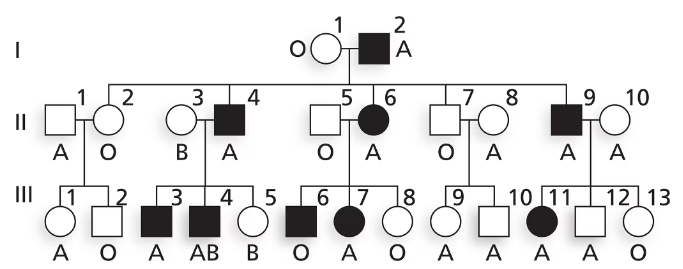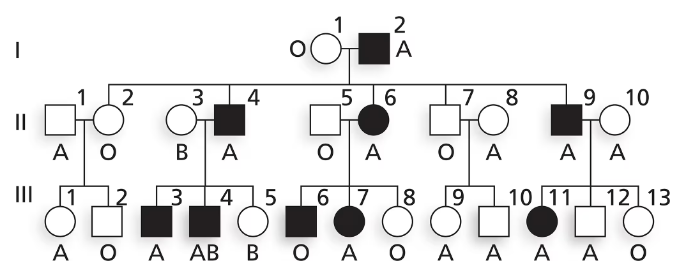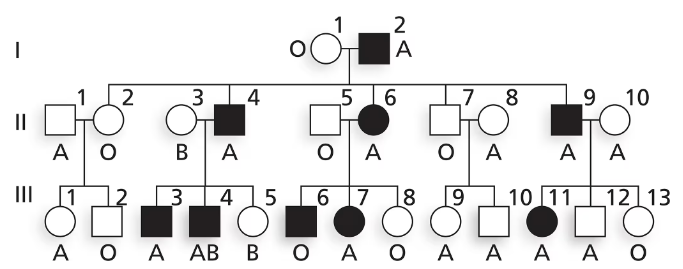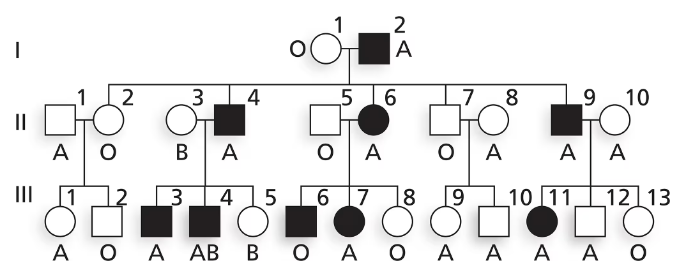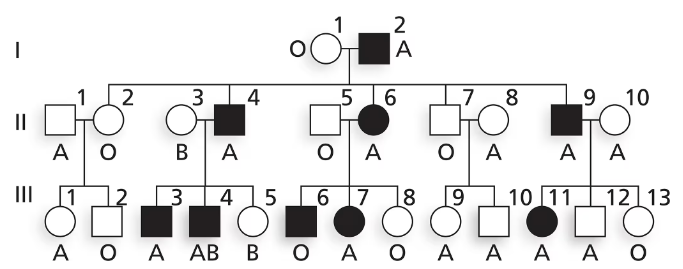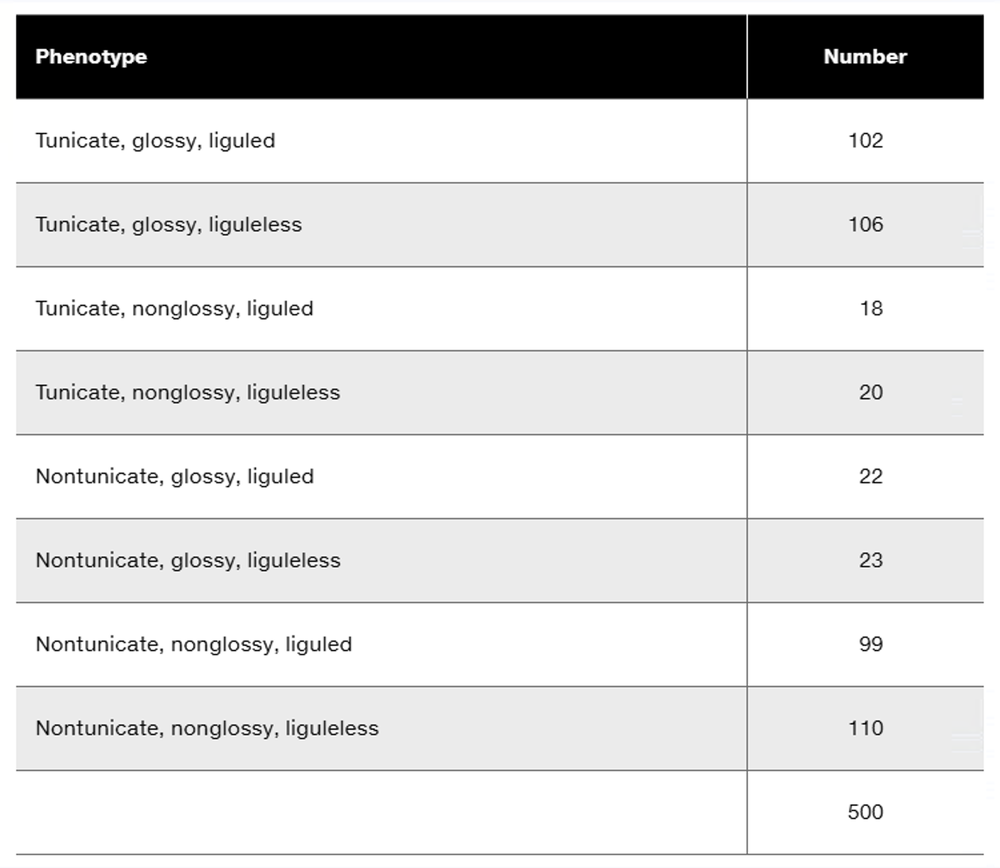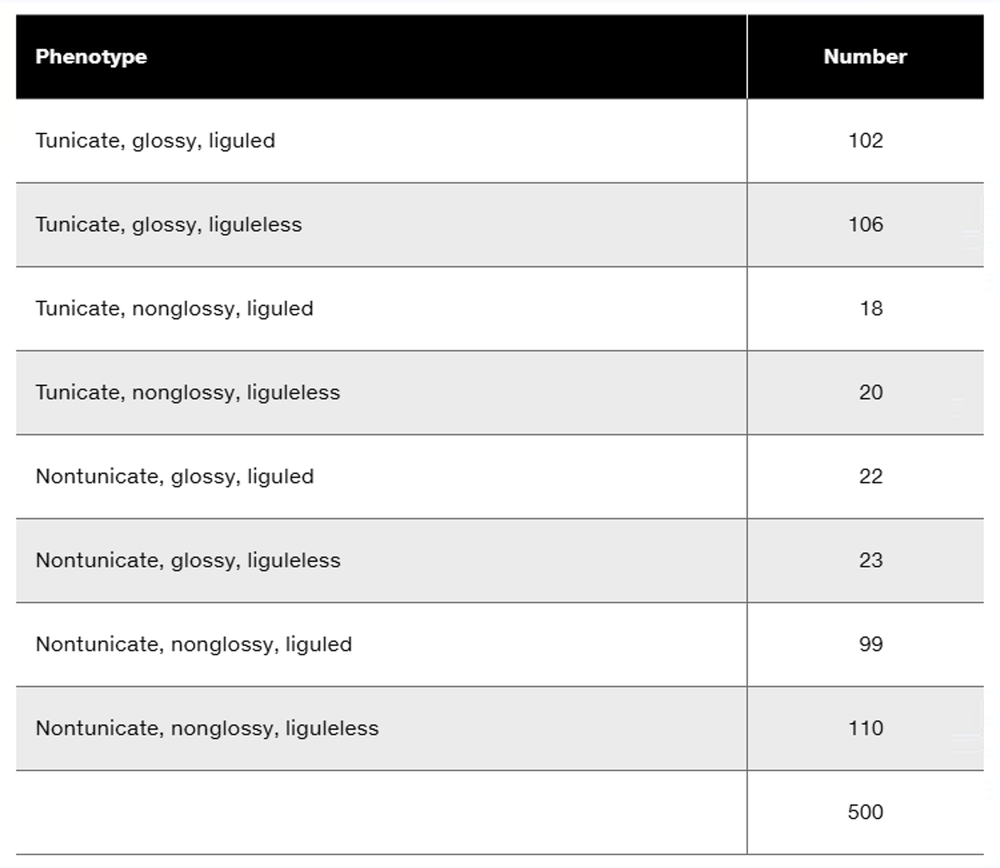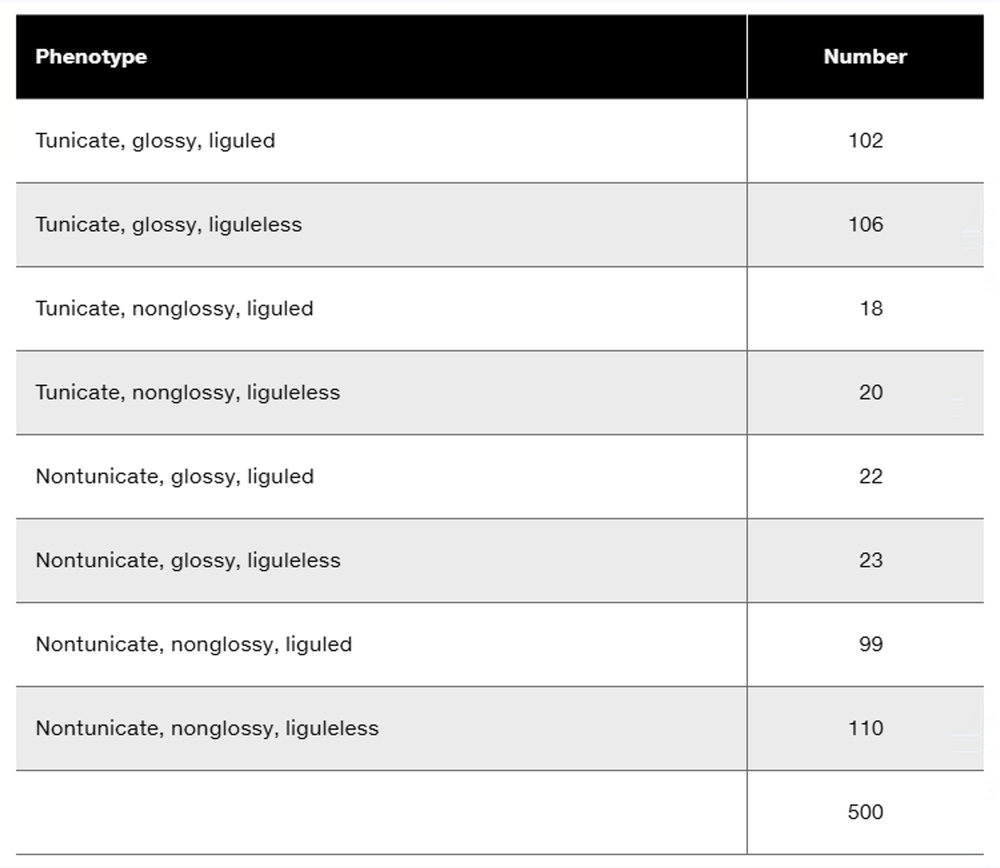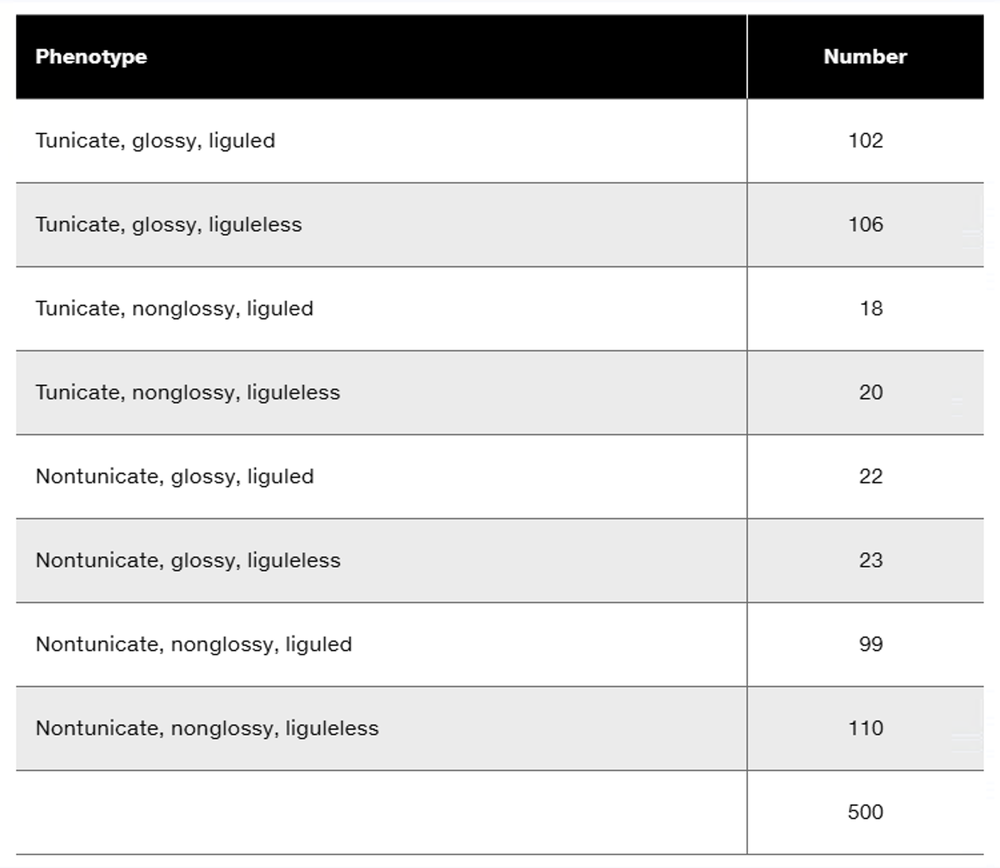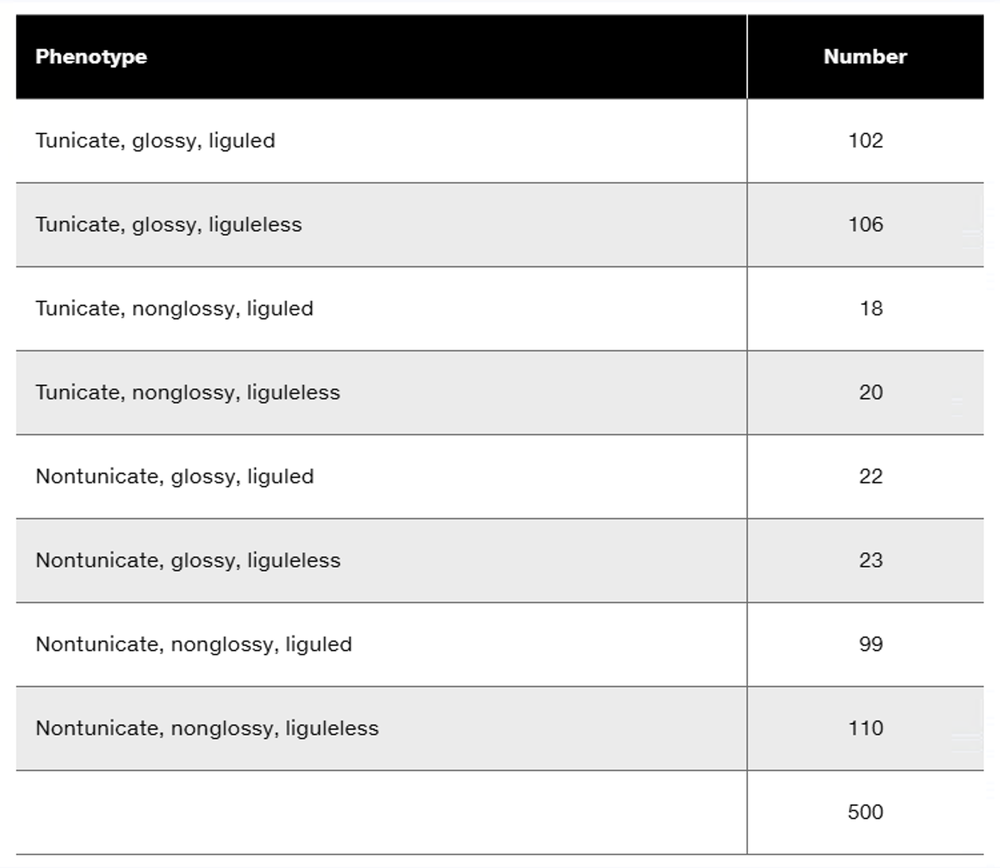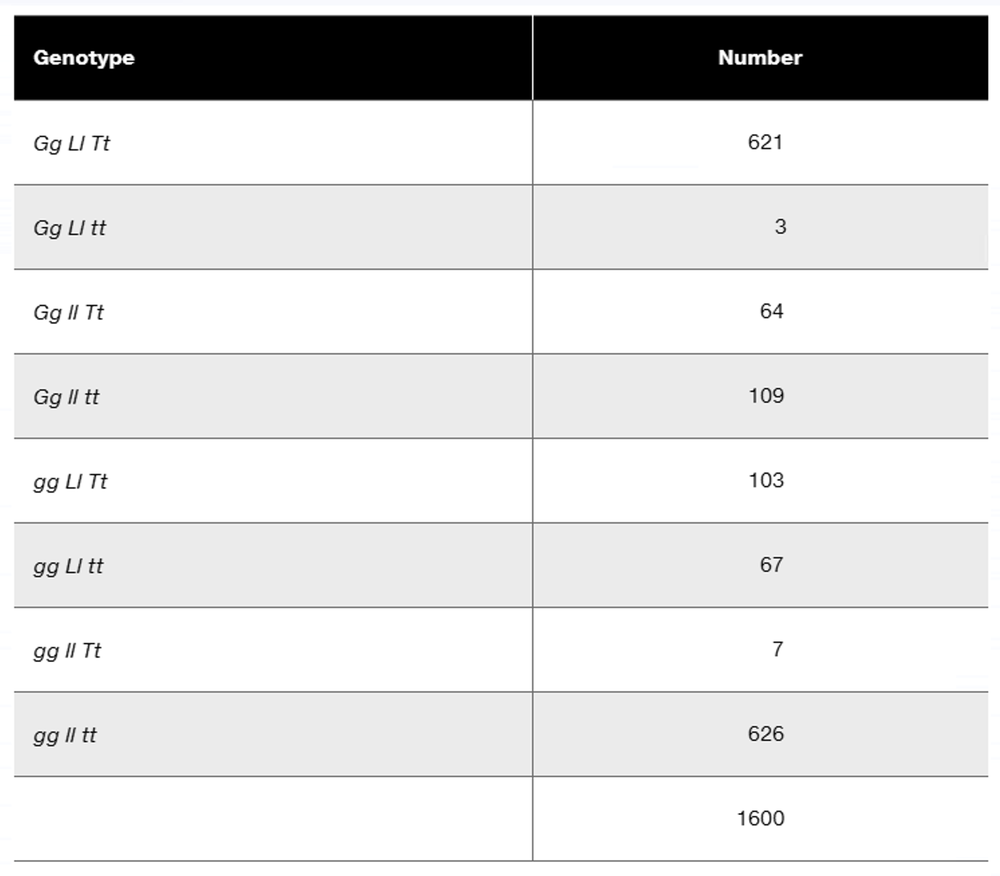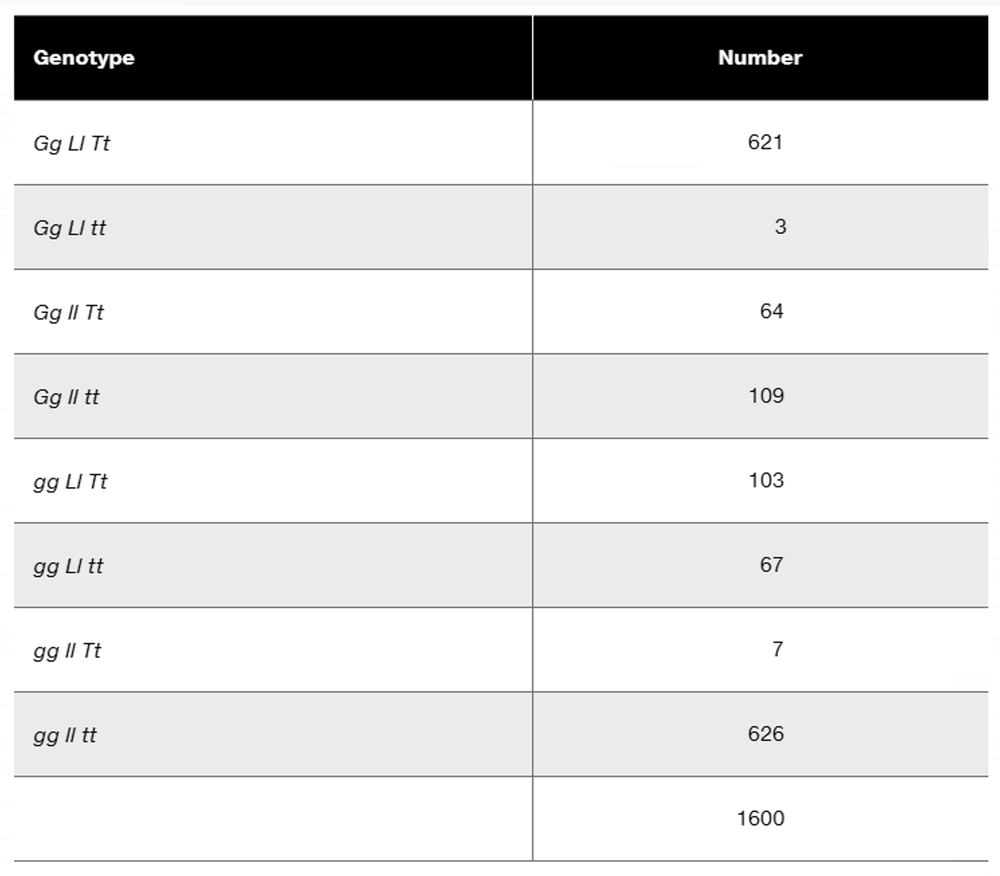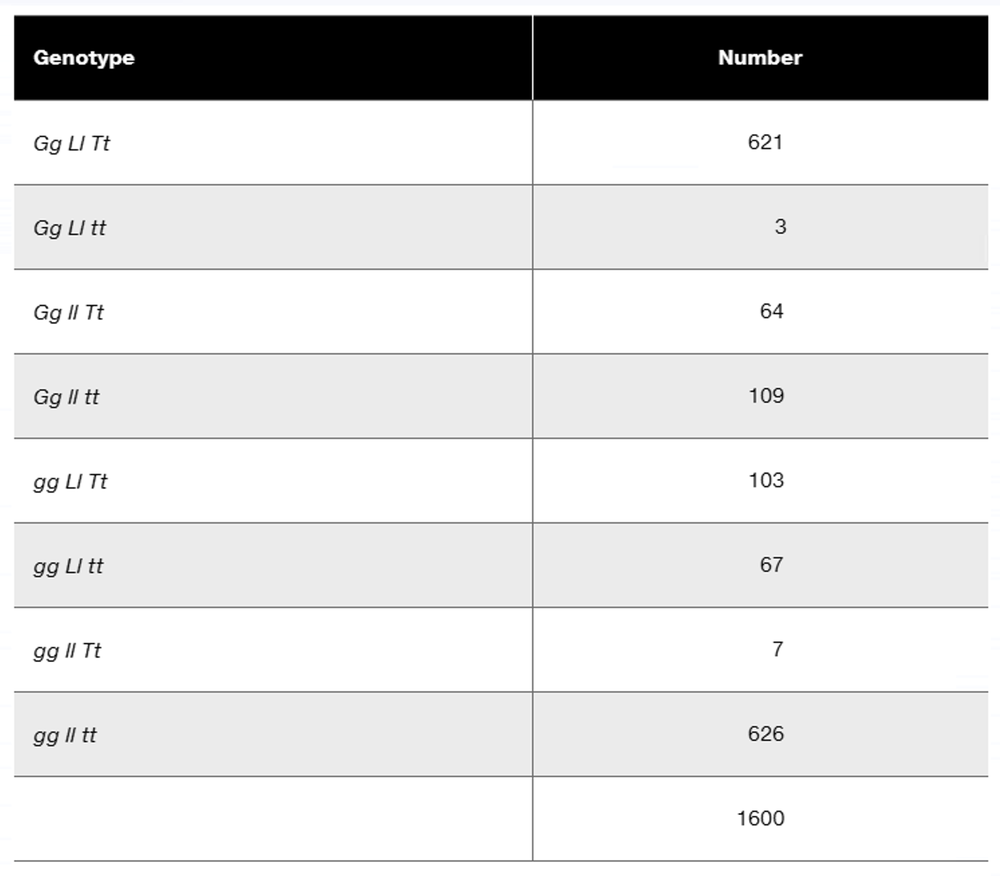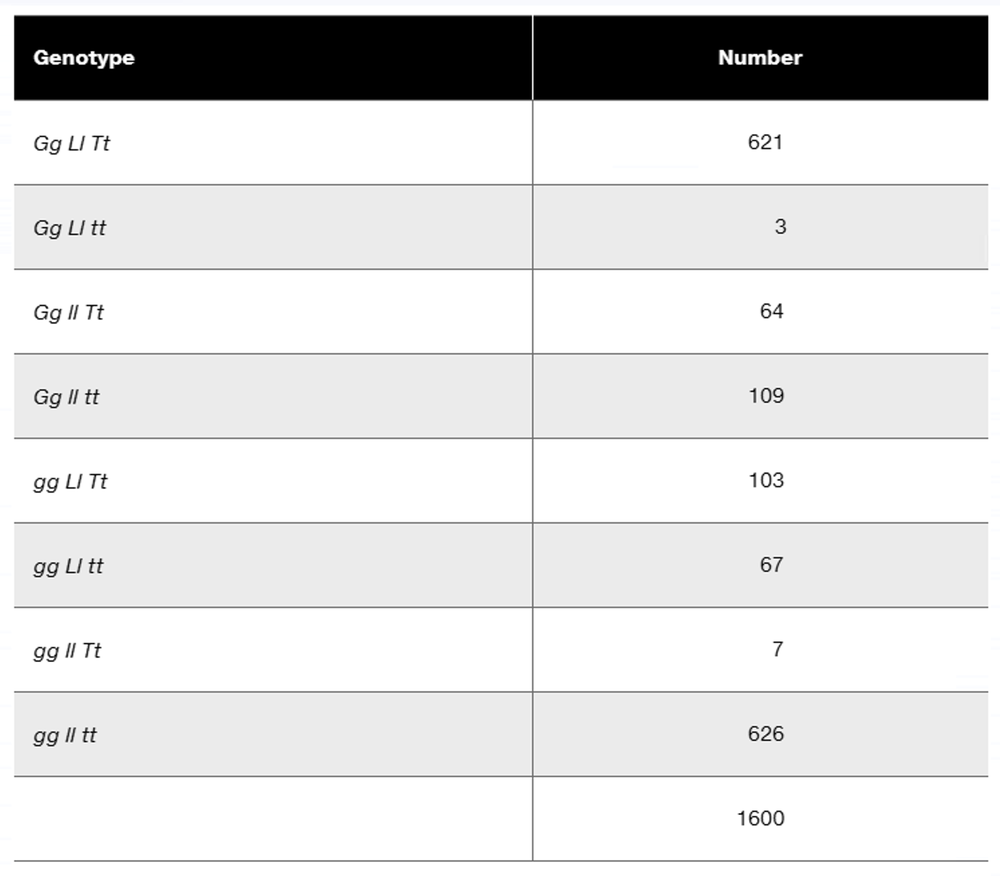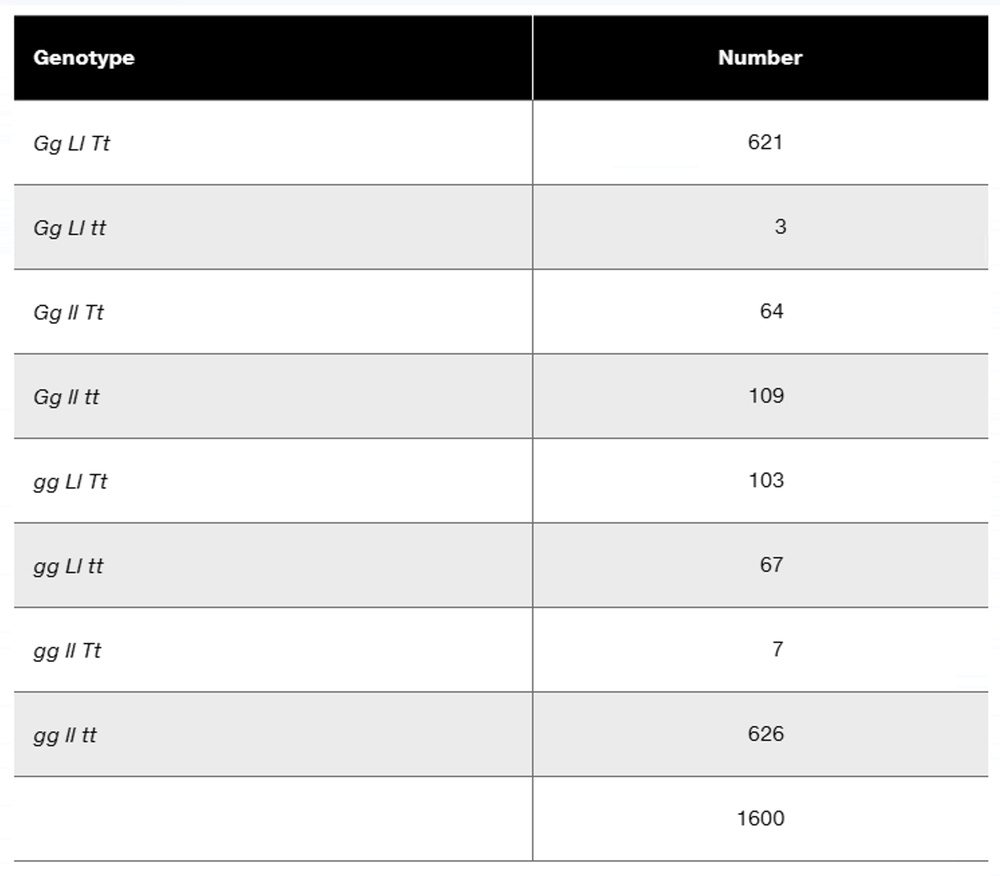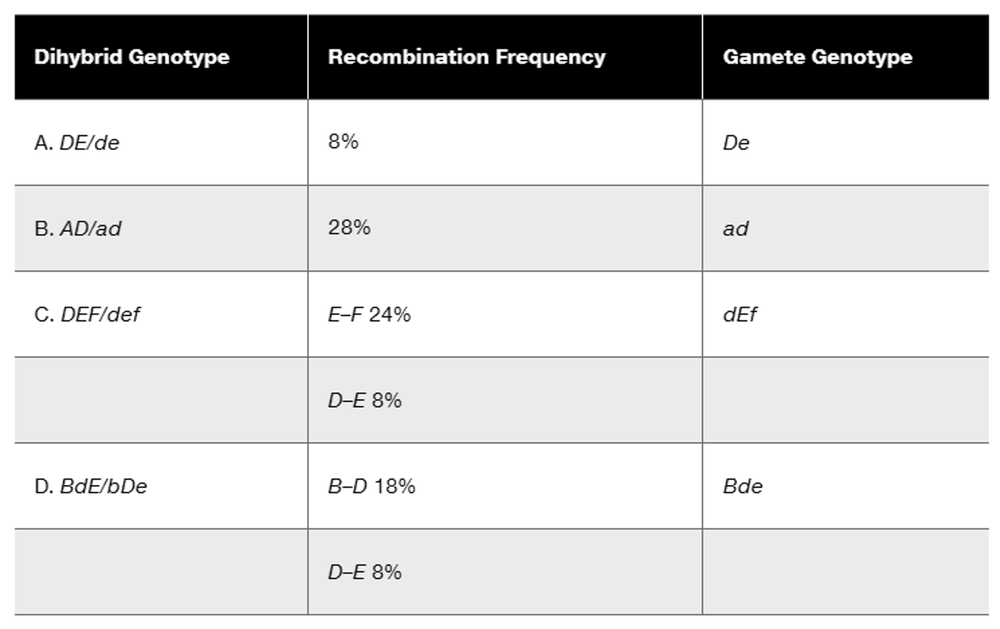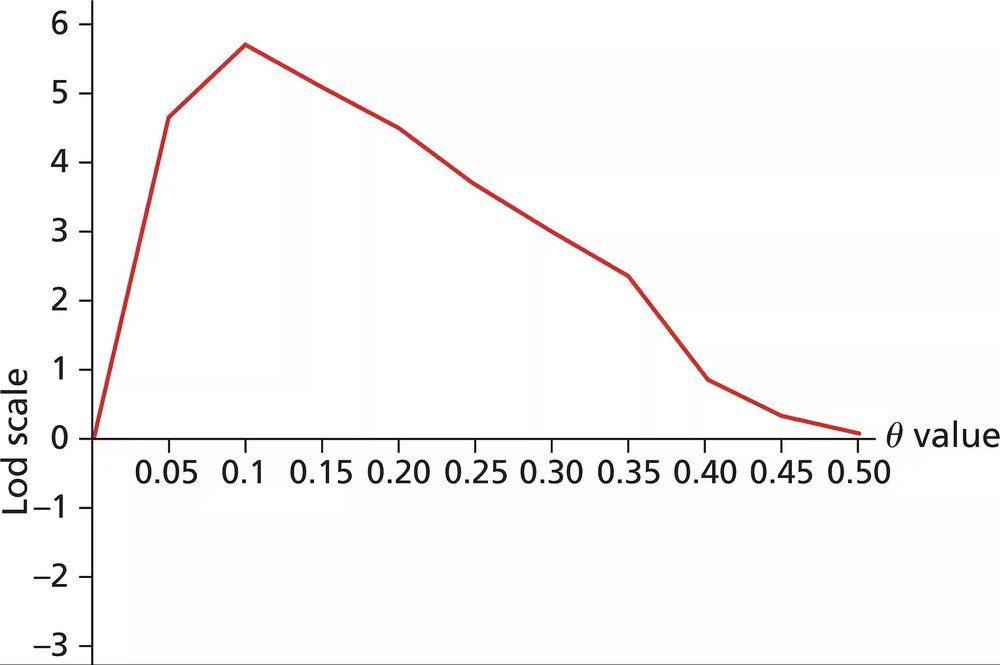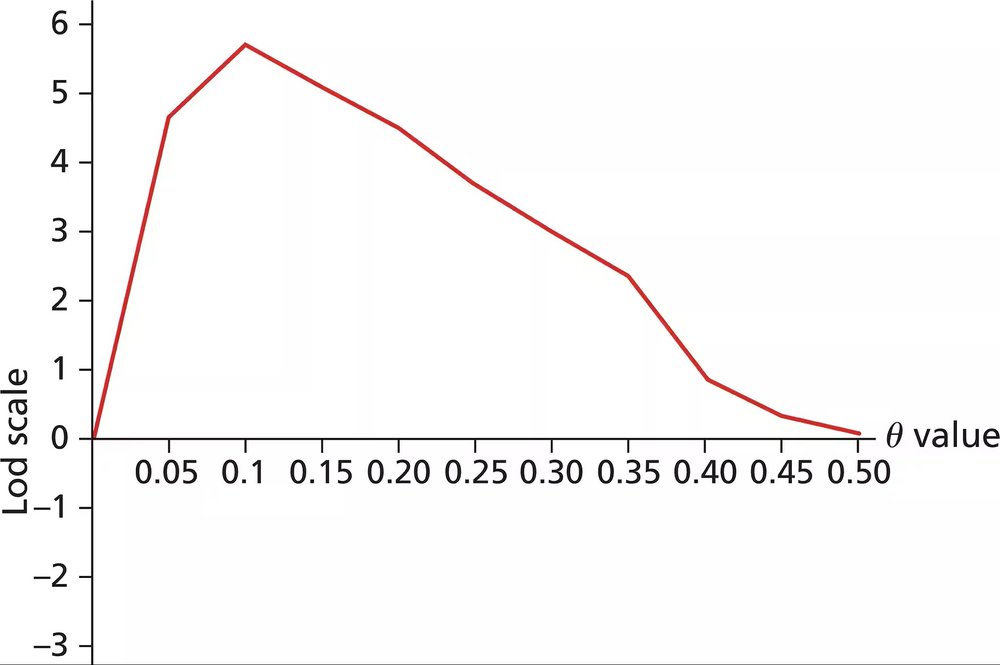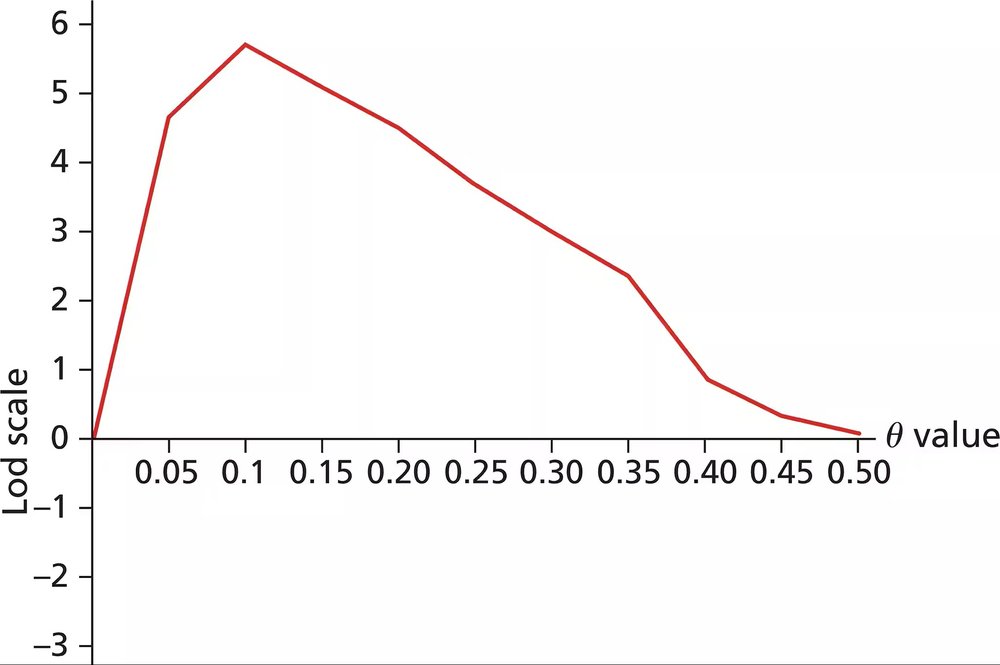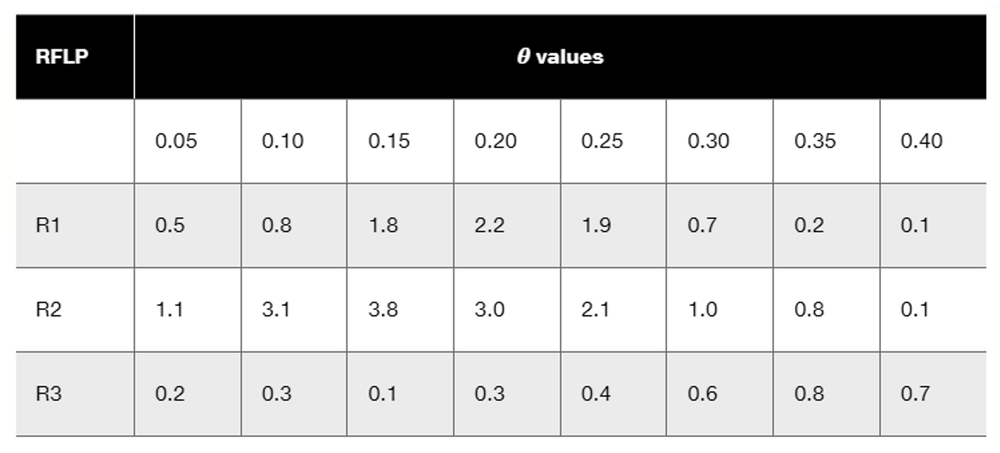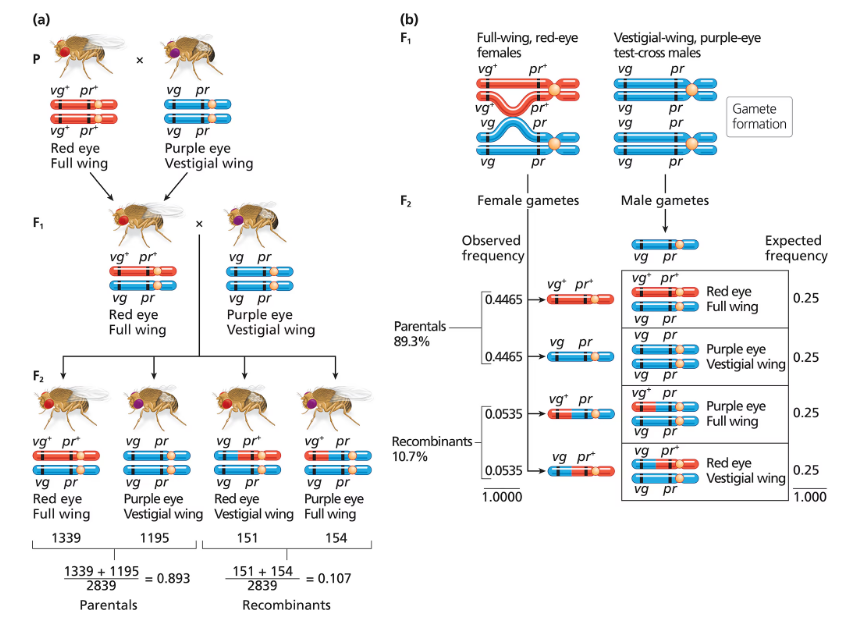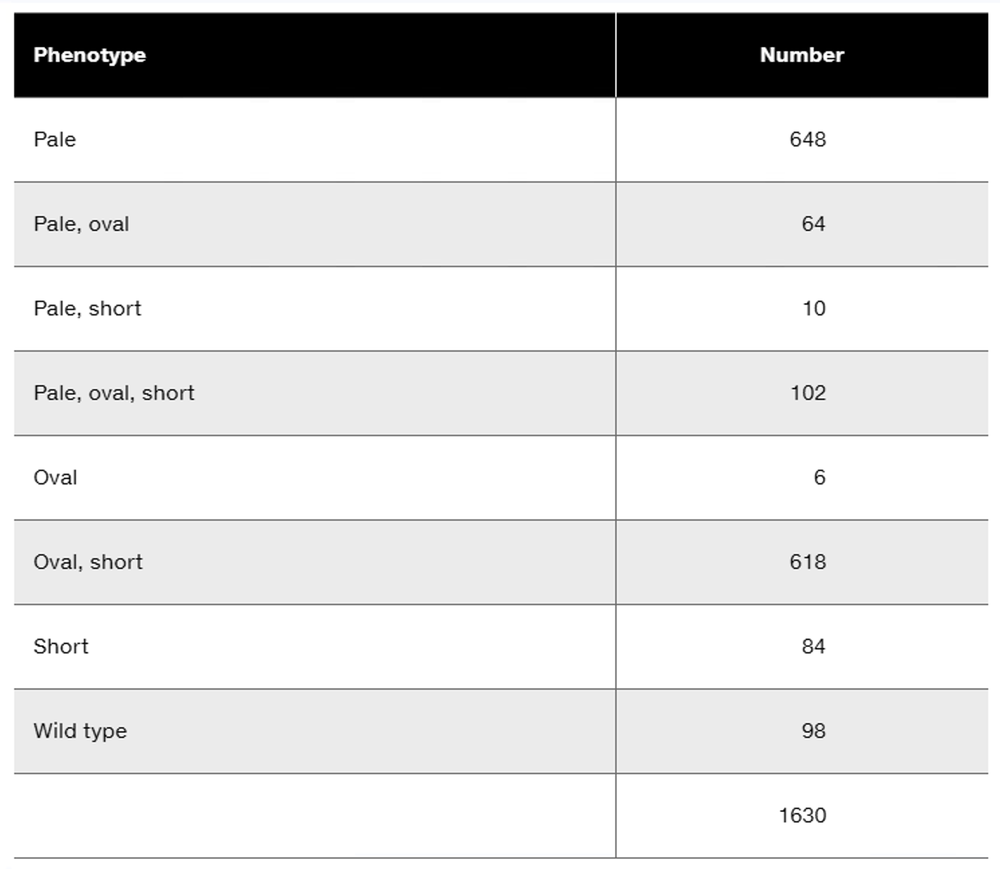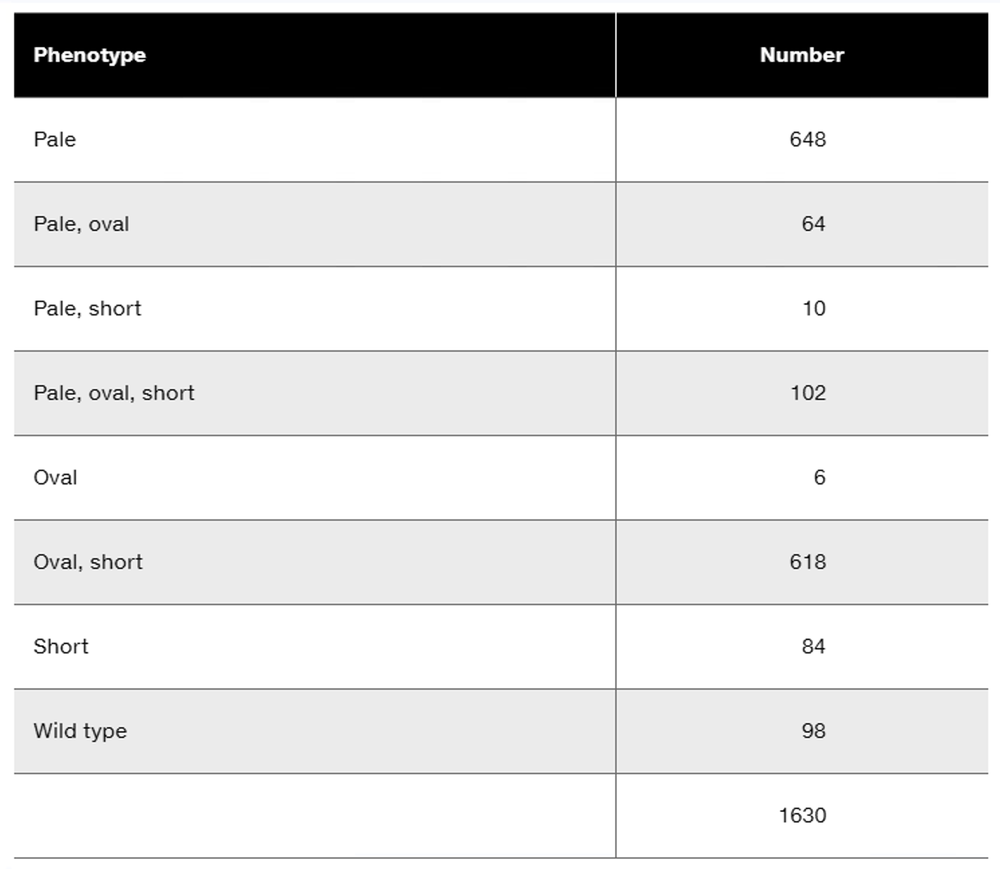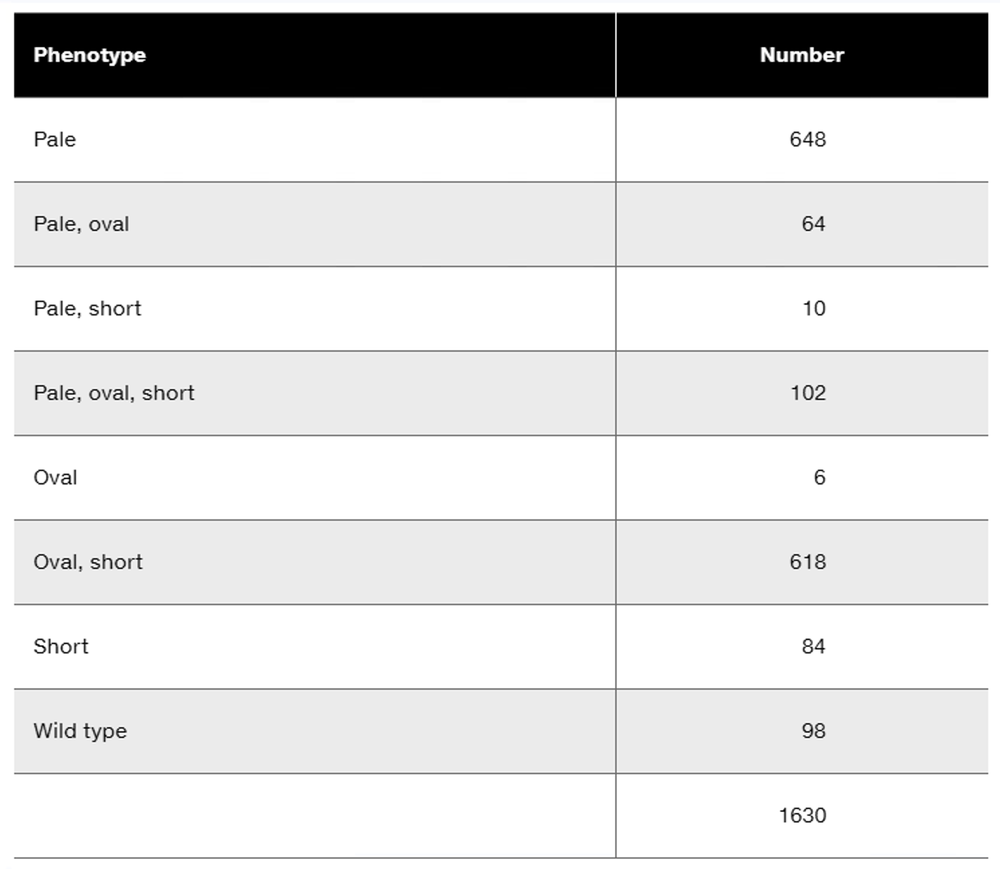 Back
BackProblem 14a
Nail–patella syndrome is an autosomal disorder affecting the shape of nails on fingers and toes as well as the structure of kneecaps. The pedigree below shows the transmission of nail–patella syndrome in a family along with ABO blood type. Is nail–patella syndrome a dominant or a recessive condition?
Is nail–patella syndrome a dominant or a recessive condition? Explain your reasoning.
Problem 14b
Nail–patella syndrome is an autosomal disorder affecting the shape of nails on fingers and toes as well as the structure of kneecaps. The pedigree below shows the transmission of nail–patella syndrome in a family along with ABO blood type.
Does this family give evidence of genetic linkage between nail–patella syndrome and ABO blood group? Why or why not?
Problem 14c
Nail–patella syndrome is an autosomal disorder affecting the shape of nails on fingers and toes as well as the structure of kneecaps. The pedigree below shows the transmission of nail–patella syndrome in a family along with ABO blood type.
Using N and n to represent alleles at the nail–patella locus and Iᴬ, Iᴮ and i to represent ABO alleles, write the genotypes of I-1 and I-2 as well as their five children in generation II.
Problem 14d
Nail–patella syndrome is an autosomal disorder affecting the shape of nails on fingers and toes as well as the structure of kneecaps. The pedigree below shows the transmission of nail–patella syndrome in a family along with ABO blood type.
Explain why III-6 has nail–patella syndrome and III-8 does not. Give genotypes for these two individuals.
Problem 14e
Nail–patella syndrome is an autosomal disorder affecting the shape of nails on fingers and toes as well as the structure of kneecaps. The pedigree below shows the transmission of nail–patella syndrome in a family along with ABO blood type.
Explain why III-11 has nail–patella syndrome and III-12 does not. Give genotypes for these two individuals.
Problem 15a
Three dominant traits of corn seedlings, tunicate seed (T-), glossy appearance (G-), and liguled stem (L-), are studied along with their recessive counterparts, nontunicate (tt), nonglossy (gg), and liguleless (ll). A trihybrid plant with the three dominant traits is crossed to a nontunicate, nonglossy, liguleless plant. Kernels on ears of progeny plants are scored for the traits, with the following results:
Is there evidence of genetic linkage among any of these gene pairs? If so, identify the evidence.
Problem 15b
Three dominant traits of corn seedlings, tunicate seed (T-), glossy appearance (G-), and liguled stem (L-), are studied along with their recessive counterparts, nontunicate (tt), nonglossy (gg), and liguleless (ll). A trihybrid plant with the three dominant traits is crossed to a nontunicate, nonglossy, liguleless plant. Kernels on ears of progeny plants are scored for the traits, with the following results:
Is there evidence of independent assortment among any of these gene pairs? If so, identify the evidence.
Problem 15c
Three dominant traits of corn seedlings, tunicate seed (T-), glossy appearance (G-), and liguled stem (L-), are studied along with their recessive counterparts, nontunicate (tt), nonglossy (gg), and liguleless (ll). A trihybrid plant with the three dominant traits is crossed to a nontunicate, nonglossy, liguleless plant. Kernels on ears of progeny plants are scored for the traits, with the following results:
Using the gene symbols given above, write the genotypes of F₁ and F₂ plants.
Problem 15d
Three dominant traits of corn seedlings, tunicate seed (T-), glossy appearance (G-), and liguled stem (L-), are studied along with their recessive counterparts, nontunicate (tt), nonglossy (gg), and liguleless (ll). A trihybrid plant with the three dominant traits is crossed to a nontunicate, nonglossy, liguleless plant. Kernels on ears of progeny plants are scored for the traits, with the following results:
If evidence of linkage is present, calculate the recombination frequency or frequencies from the data presented.
Problem 15e
Three dominant traits of corn seedlings, tunicate seed (T-), glossy appearance (G-), and liguled stem (L-), are studied along with their recessive counterparts, nontunicate (tt), nonglossy (gg), and liguleless (ll). A trihybrid plant with the three dominant traits is crossed to a nontunicate, nonglossy, liguleless plant. Kernels on ears of progeny plants are scored for the traits, with the following results:
Could all three genes be carried on the same chromosome? Discuss why or why not.
Problem 16a
In a diploid plant species, an F₁ with the genotype Gg Ll Tt is test-crossed to a pure-breeding recessive plant with the genotype gg ll tt. The offspring genotypes are as follows:
What is the order of these three linked genes?
Problem 16b
In a diploid plant species, an F₁ with the genotype Gg Ll Tt is test-crossed to a pure-breeding recessive plant with the genotype gg ll tt. The offspring genotypes are as follows:
Calculate the recombination frequency between each pair of genes.
Problem 16c
In a diploid plant species, an F₁ with the genotype Gg Ll Tt is test-crossed to a pure-breeding recessive plant with the genotype gg ll tt. The offspring genotypes are as follows:
Why is the recombination frequency for the outside pair of genes not equal to the sum of recombination frequencies between the adjacent gene pairs?
Problem 16d
In a diploid plant species, an F₁ with the genotype Gg Ll Tt is test-crossed to a pure-breeding recessive plant with the genotype gg ll tt. The offspring genotypes are as follows:
What is the interference value for this data set?
Problem 16e
In a diploid plant species, an F₁ with the genotype Gg Ll Tt is test-crossed to a pure-breeding recessive plant with the genotype gg ll tt. The offspring genotypes are as follows:
Explain the meaning of this I value.
Problem 17
The table given here lists the arrangement of alleles of linked genes in dihybrid organisms, the recombination frequency between the genes, and specific gamete genotypes. Using the information provided, determine the expected frequency of the listed gametes. Assume one map unit equals 1% recombination and, when three genes are involved, interference is zero.
Problem 18a
The Rh blood group in humans is determined by a gene on chromosome 1. A dominant allele produces Rh+ blood type, and a recessive allele generates Rh-. Elliptocytosis is an autosomal dominant disorder that produces abnormally shaped red blood cells that have a short life span resulting in hereditary anemia. A large family with elliptocytosis is tested for genetic linkage of Rh blood group and the disease. The lod score data below are obtained for the family.
From these data, can you conclude that Rh and elliptocytosis loci are genetically linked in this family? Why or why not?
Problem 18b
The Rh blood group in humans is determined by a gene on chromosome 1. A dominant allele produces Rh+ blood type, and a recessive allele generates Rh-. Elliptocytosis is an autosomal dominant disorder that produces abnormally shaped red blood cells that have a short life span resulting in hereditary anemia. A large family with elliptocytosis is tested for genetic linkage of Rh blood group and the disease. The lod score data below are obtained for the family.
What is Zₘₐₓ for this family?
Problem 18c
The Rh blood group in humans is determined by a gene on chromosome 1. A dominant allele produces Rh+ blood type, and a recessive allele generates Rh-. Elliptocytosis is an autosomal dominant disorder that produces abnormally shaped red blood cells that have a short life span resulting in hereditary anemia. A large family with elliptocytosis is tested for genetic linkage of Rh blood group and the disease. The lod score data below are obtained for the family.
Over what range of θ do lod scores indicate significant evidence in favor of genetic linkage?
Problem 19a
Genetic linkage mapping for a large number of families identifies 4% recombination between the genes for Rh blood type and elliptocytosis (see Problem 18). At the Rh locus, alleles R and r control Rh+ and Rh- blood types. Allele E producing elliptocytosis is dominant to the wild-type recessive allele e. Tom and Terri each have elliptocytosis, and each is . Tom's mother has elliptocytosis and is Rh- while his father is healthy and has Rh+. Terri's father is Rh+ and has elliptocytosis; Terri's mother is Rh- and is healthy.
What is the probability that the first child of Tom and Terri will be Rh− and have elliptocytosis?
Problem 19b
Genetic linkage mapping for a large number of families identifies 4% recombination between the genes for Rh blood type and elliptocytosis (see Problem 18). At the Rh locus, alleles R and r control Rh+ and Rh- blood types. Allele E producing elliptocytosis is dominant to the wild-type recessive allele e. Tom and Terri each have elliptocytosis, and each is . Tom's mother has elliptocytosis and is Rh- while his father is healthy and has Rh+. Terri's father is Rh+ and has elliptocytosis; Terri's mother is Rh- and is healthy.
What is the probability that a child of Tom and Terri who is Rh+ will have elliptocytosis?
Problem 20
A group of families in which an autosomal dominant condition is present are studied to determine lod scores for possible genetic linkage between three RFLP markers (R1, R2, and R3) and the disease gene. The chart shows lod scores at each of the recombination distances (θ values) tested. Provide an interpretation of the lod score results for each RFLP. Be specific about any significant evidence of genetic linkage.
Problem 21a
Gene R and gene T are genetically linked. Answer the following questions concerning a dihybrid organism with the genotype Rt/rT:
If r = 0.20, give the expected frequencies of gametes produced by the dihybrid.
Problem 21b
Gene R and gene T are genetically linked. Answer the following questions concerning a dihybrid organism with the genotype Rt/rT:
If two crossover events occur between these two genes, what are the genotypes of the recombinant chromosomes?
Problem 21c
Gene R and gene T are genetically linked. Answer the following questions concerning a dihybrid organism with the genotype Rt/rT:
Can you make a general statement about how the occurrence of two crossover events between a given pair of linked genes affects the estimate of recombination frequency?
Problem 22
T. H. Morgan's data on eye color and wing form genetic linkage between the two genes. Test the genetic linkage (shown in the figure below) data with chi-square analysis, and show that the results are significantly different from the expectation under the assumption of independent assortment.
Problem 23a
A wild-type trihybrid soybean plant is crossed to a pure-breeding soybean plant with the recessive phenotypes pale leaf (l), oval seed (r), and short height (t). The results of the three-point test cross are shown below. Traits not listed are wild type.
What are the alleles on each homologous chromosome of the parental wild-type trihybrid soybean plant? Place the alleles in their correct gene order. Use L, R, and T to represent dominant alleles and l, r, and t for recessive alleles.
Problem 23b
A wild-type trihybrid soybean plant is crossed to a pure-breeding soybean plant with the recessive phenotypes pale leaf (l), oval seed (r), and short height (t). The results of the three-point test cross are shown below. Traits not listed are wild type.
Calculate the recombination frequencies between the adjacent genes.
Problem 23c
A wild-type trihybrid soybean plant is crossed to a pure-breeding soybean plant with the recessive phenotypes pale leaf (l), oval seed (r), and short height (t). The results of the three-point test cross are shown below. Traits not listed are wild type.
Calculate the interference value for these data.
Problem 24a
The boss in your laboratory has just heard of a proposal by another laboratory that genes for eye color and the length of body bristles may be linked in Drosophila. Your lab has numerous pure-breeding stocks of Drosophila that could be used to verify or refute genetic linkage. In Drosophila, red eyes (c⁺) are dominant to brown eyes (c) and long bristles (d⁺) are dominant to short bristles (d). Your lab boss asks you to design an experiment to test the genetic linkage of eye color and bristle-length genes, and to begin by crossing a pure-breeding line homozygous for red eyes and short bristles to a pure-breeding line that has brown eyes and long bristles.
Give the genotypes of the pure-breeding parental flies and the genotype(s) and phenotype(s) of the F₁ progeny they produce.

